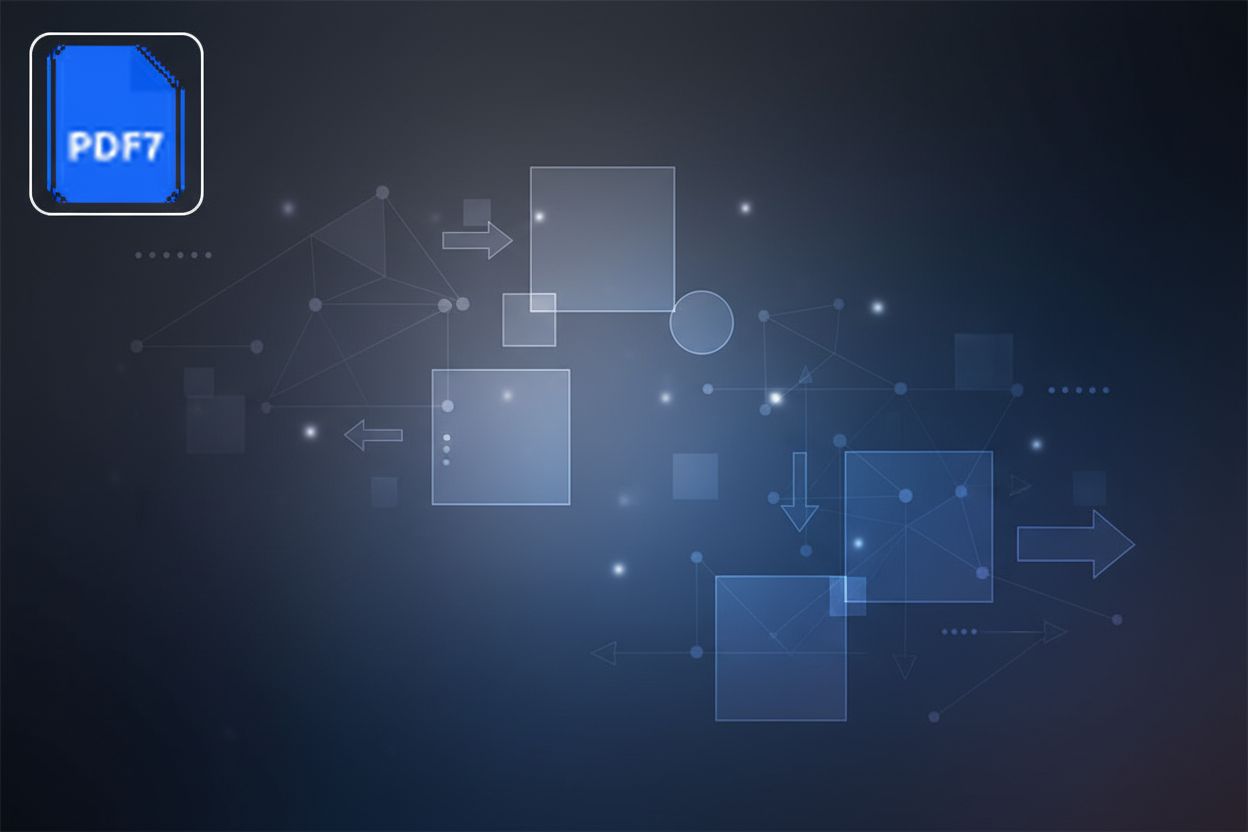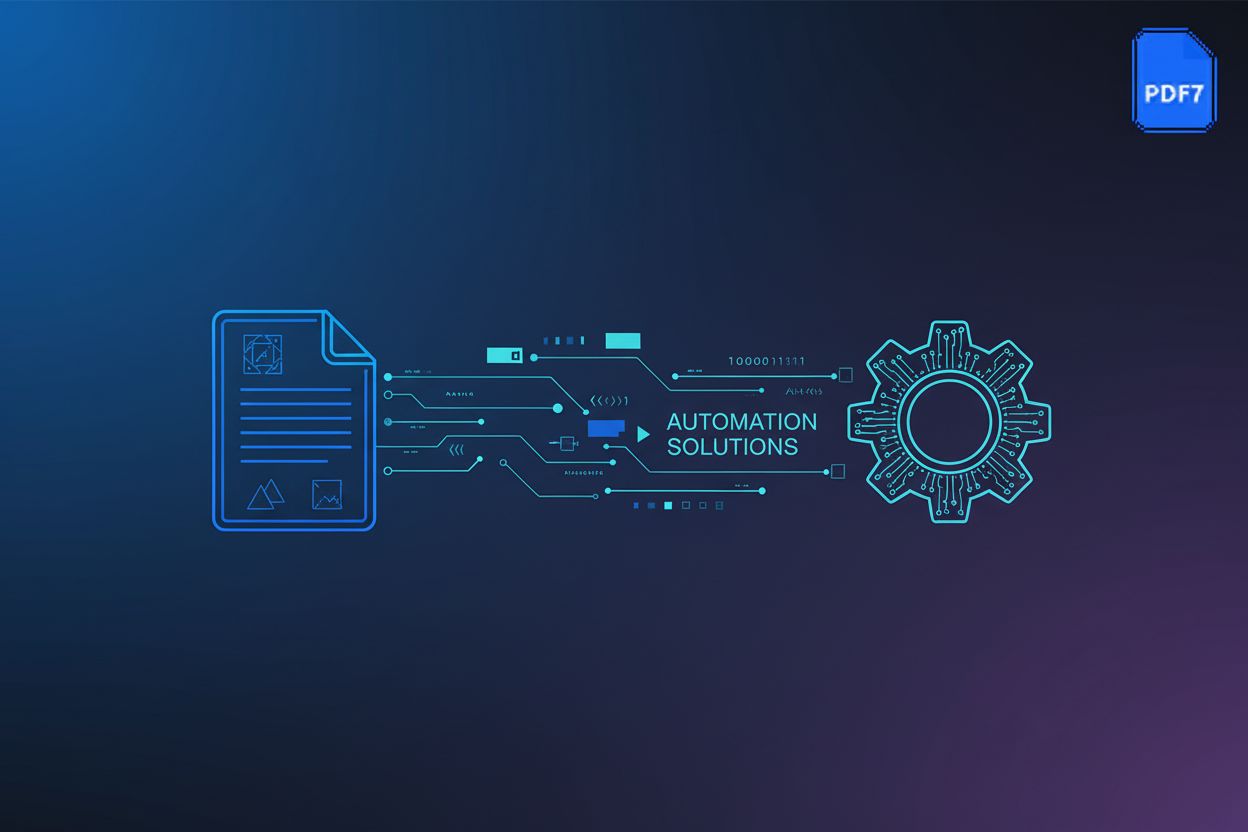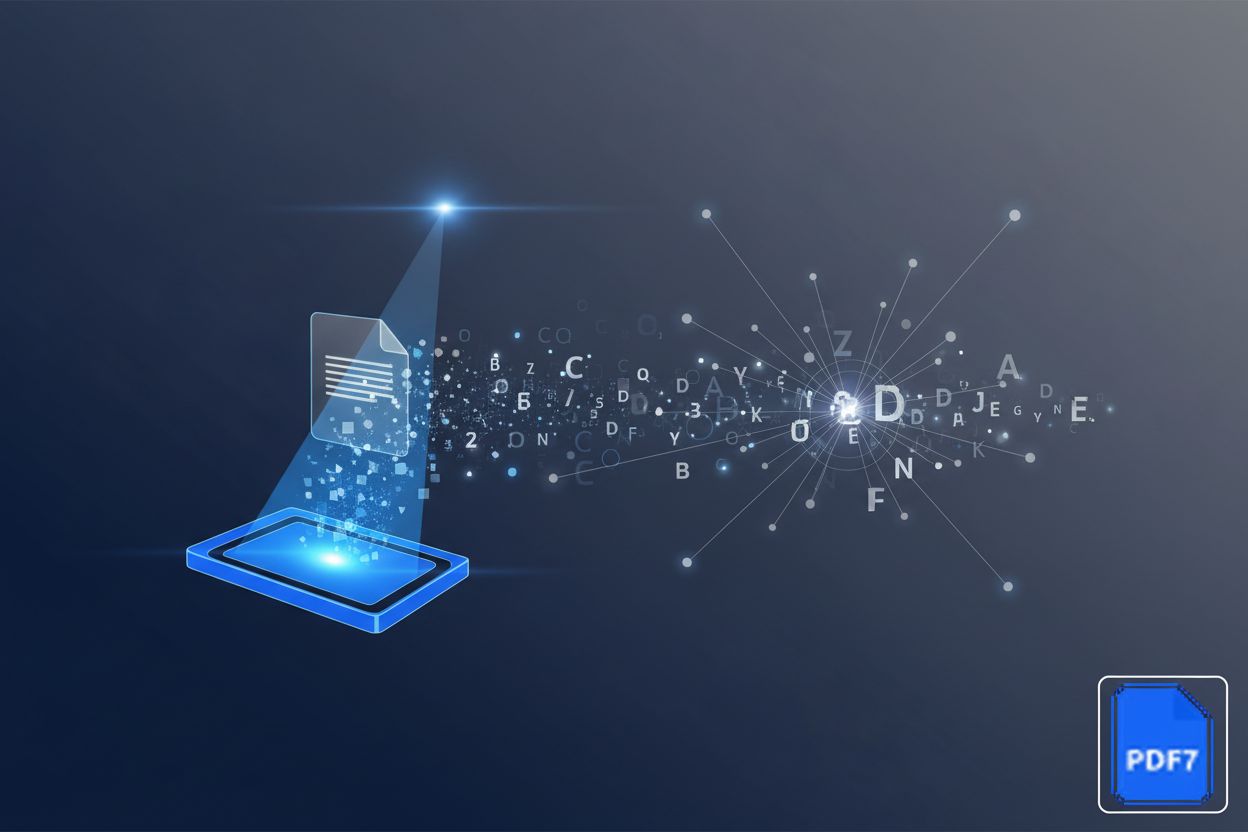Unlocking PDFs: How AI-Powered Content Extraction is Revolutionizing Document Workflows
The PDF Predicament: Why Extraction is So Challenging
PDFs are the unsung heroes of document sharing, but they can also be a major headache when you need to extract their contents. Why is getting data out of PDFs so difficult? Let's dive into the challenges.
PDFs are the go-to format for storing and sharing documents because they ensure your document looks the same no matter what device or operating system it's opened on. (An introduction to the PDF file format - Shorthand)
This formatting preservation is a huge advantage, especially when dealing with complex layouts or specific design requirements.
However, this very structure makes it incredibly hard to automatically pull data out of them. As Astera notes, PDFs pose certain challenges when it comes to data extraction. (How to Use AI to Extract Data from PDF Files | Astera)
The old-school way involves manual data entry, which is slow, prone to errors, and expensive. Imagine retyping hundreds of invoices – nobody wants that job!
Basic OCR (Optical Character Recognition) can help, but it often struggles with scanned documents, funky layouts, and those pesky tables.
These conventional tools simply can't handle the semi-structured and unstructured PDFs that are common in many industries. Think of legal contracts with their dense text, specific legal jargon, and complex clause structures, or healthcare records with inconsistent formatting.
According to Astera, the error rate associated with manual data extraction can be as high as 5 to 10%.
- A staggering amount of business data is locked away in PDFs, never to be used. Astera reports that 68% of data created by businesses is not utilized at all, and much of this data is trapped in formats like PDFs.
- Inaccurate extraction leads to mistakes and poor decision-making. Imagine a financial analyst using flawed data from incorrectly extracted PDF reports – the consequences could be significant.
- The time wasted on these manual processes could be spent on more strategic, high-value tasks. Think about what your team could achieve if they weren't bogged down in PDF wrangling.
So, with all these challenges, how can we unlock the data hidden within PDFs? The next section explores how AI-powered content extraction is changing the game.
AI to the Rescue: Revolutionizing PDF Content Extraction
AI is rapidly transforming how we interact with documents, especially PDFs. But how exactly does this technology work its magic?
- Intelligent Document Processing (IDP) is the secret sauce. It's a sophisticated approach that leverages ai, machine learning (ml), and natural language processing (nlp) to truly understand document context, not just recognize characters. This goes beyond basic ai-enhanced ocr and nlp by not only reading text but also interpreting its meaning, relationships, and intent within the document. IDP systems are designed to handle the full spectrum of document types, from highly structured forms to completely unstructured text.
- This allows for the automation of data extraction from even the most unruly unstructured and semi-structured PDFs. Consider how legal firms can now quickly analyze contracts, or how retail companies can process diverse supplier invoices with ease.
- What's more, IDP tools are not static, they learn and adapt to different document types and layouts. This is a game-changer for industries dealing with a high variety of documents, like healthcare or logistics.
Here's a look at the core components that power AI-enhanced extraction:
- AI-enhanced OCR is the foundation, boosting text recognition accuracy, particularly vital for those tricky scanned documents.
- Then comes Natural Language Processing (NLP), which helps the system understand the meaning and relationships between data points. For example, nlp can identify that "Due Date" and "Payment Deadline" refer to the same thing, even if the wording differs.
- Finally, machine learning algorithms step in to identify patterns and learn from data, constantly improving extraction performance over time. Imagine a system that gets better at extracting data from financial reports the more reports it processes!
These components work together through a structured extraction process:
- Text Recognition: It all starts with ai-enhanced ocr converting PDFs into searchable, editable data.
- Data Preprocessing: Next up is cleaning and organizing the data, preparing it for the ai/ml algorithms to work their magic.
- Data Extraction: Here, nlp and idp take center stage, identifying, classifying, and extracting the relevant data.
- Data Validation: The focus shifts to ensuring data accuracy and integrity through rigorous quality checks.
- Data Integration: Finally, the extracted data is integrated into relevant systems for analysis and decision-making.
Now that we've seen how ai tackles pdf extraction head-on, let's dive into the practical applications and real-world benefits this technology unlocks.
Benefits of AI-Powered PDF Content Extraction
AI-powered content extraction from PDFs isn't just a futuristic concept; it's a present-day solution that's rapidly transforming how businesses operate. But what exactly are the advantages of using ai to unlock the data trapped within these documents? Let's explore the key benefits.
One of the most significant advantages of ai-powered pdf extraction is its impressive accuracy. Astera's research highlights that ai can achieve accuracy rates of up to 99% in data extraction. This drastic reduction in errors not only minimizes costly mistakes but also enhances the overall reliability of the data being used.
- Automation significantly speeds up document processing, saving precious time and resources. For instance, ai can automatically process insurance claims, extracting vital information like policy numbers, customer details, and claim amounts.
- This increased efficiency translates to faster insights and better decision-making. Imagine a retail company instantly analyzing customer feedback from pdf surveys to identify trends and improve their services.
The automation capabilities of ai not only improve accuracy but also deliver substantial cost and time savings.
- According to PwC, even basic ai-based data extraction can save organizations 30-40% of the time typically spent on these processes. The time saved can be reinvested into more strategic activities, such as product development or market research.
- In accounts payable, ai can automate invoice processing, reducing manual effort and ensuring timely payments.
- Faster processing leads to quicker turnaround times and improved customer satisfaction. Think of a logistics company rapidly processing shipping documents, enabling faster delivery times and enhancing customer loyalty.
PwC reports that even the most basic ai-based data extraction can save organizations 30-40% of the time typically spent on data extraction.
AI-powered pdf content extraction also offers significant benefits in terms of compliance and scalability.
- Improved data integrity enhances compliance with regulations like GDPR and HIPAA. In healthcare, ai can ensure that patient data extracted from pdf medical records is accurate and secure, reducing the risk of compliance breaches.
- AI's ability to process large volumes of PDFs allows for scalability. A growing e-commerce business can use ai to handle an increasing number of customer orders, processing them efficiently without adding headcount.
- AI's ability to self-learn is an underrated benefit of leveraging it for data extraction from PDFs. For organizations working with PDFs containing different document types and varying layouts and formats, ai can adapt to the changes for improved efficiency and accuracy.
These applications demonstrate how ai-powered extraction not only streamlines operations but also ensures adherence to regulatory standards, all while providing the flexibility to scale as needed.
Now that we've explored the key benefits, let's examine some real-world examples of ai-powered pdf content extraction in action.
Real-World Applications: Use Cases Across Industries
Is your organization drowning in PDFs? AI-powered content extraction offers a life raft, transforming static documents into actionable data across various industries.
AI automates the extraction of crucial information from insurance claim forms. This includes policy details, customer information, and claim amounts, as mentioned earlier.
Faster claims processing not only improves operational efficiency, but also significantly enhances customer satisfaction. Think of quicker payouts and less frustrating experiences for policyholders, reducing customer churn.
By automating these repetitive tasks, insurance companies can free up valuable resources for more complex tasks. This allows claims adjusters to focus on exceptional cases, fraud detection, and personalized customer service.
AI accurately extracts data from invoices and purchase orders, including item descriptions, quantities, dates, and amounts. This significantly reduces discrepancies and errors that often occur with manual data entry.
Automated processing enables quick turnaround times, leading to improved vendor relationships and customer satisfaction. Imagine suppliers getting paid faster and customers receiving their orders promptly.
Contextual analysis ensures accurate interpretation of variable data formats, even when dealing with different layouts and terminology. The ai can understand that "P.O. Number," "Purchase Order ID," and "Order Ref" all refer to the same data point.
AI converts contract PDFs into searchable data, a task that previously took hours can now be accomplished in minutes, saving time and costs. Legal teams can quickly access critical information within complex agreements.
Automated extraction identifies key clauses, dates, obligations, and potential risks within contracts, as well as compliance requirements. This allows for proactive risk management and better-informed decision-making.
Improved contract management reduces risks and increases operational efficiency. Businesses can ensure compliance, identify opportunities, and avoid costly disputes by having instant access to contract details.
Healthcare records are a prime example of where AI-powered extraction shines. Imagine extracting patient demographics, medical history, lab results, and treatment plans from scanned doctor's notes, discharge summaries, or diagnostic reports. AI can handle the inconsistencies in formatting, abbreviations, and handwritten notes often found in these documents, ensuring accurate and timely access to critical patient information. This is vital for patient care, research, and compliance with regulations like HIPAA.
These are just a few examples of how ai-powered pdf content extraction is revolutionizing document workflows. Next up, we'll explore how to choose the right tool for your needs.
Choosing the Right AI-Powered PDF Extraction Tool
Choosing the right ai-powered pdf extraction tool can feel like navigating a maze, but understanding key features and considerations will light your path. Let's break down what to look for to ensure you're making the best choice for your needs.
When evaluating ai-powered pdf extraction tools, several features can significantly impact performance and usability. Prioritizing these elements ensures the tool aligns with your specific document workflows.
High accuracy rates (98% or higher) are crucial for reliable data extraction. As Astera notes, ai-powered data extraction can achieve accuracy rates of up to 99%, minimizing errors and improving data reliability.
Support for various PDF types is essential, including scanned, native, and those with complex layouts. The tool should handle diverse document structures without compromising accuracy.
Integration with existing systems and workflows streamlines the data extraction process. Seamless connectivity to your current databases, CRMs, and other platforms ensures efficient data utilization.
A user-friendly interface and ease of use are vital for adoption and efficiency. Intuitive design and straightforward navigation minimize the learning curve and empower users to extract data effortlessly.
Cloud-based ai pdf extraction tools offer varying capabilities and pricing structures. Evaluating each platform carefully ensures you select the best fit for your organization.
- Google Document AI provides ocr and structured data extraction, ideal for those heavily invested in the Google ecosystem. However, Victory Square Partners highlights that the specific prompt engineering plays a crucial role in ensuring correct data hierarchy.
- AWS Textract offers ocr and structured data extraction with customization options. As noted by Victory Square Partners, it may require additional customization for hierarchical extraction.
- Azure Form Recognizer offers ocr and key-value extraction, requiring prompt engineering. Similar to Vertex ai, precise prompting is essential to achieve the desired results.
In this context, prompt engineering refers to the art of crafting specific instructions or questions (prompts) for the ai model to guide its output. For PDF extraction, a prompt might look like: "Extract all invoice numbers and their corresponding total amounts from this document." Precise prompting is essential to achieve the desired results.
Consider factors like pricing, scalability, and integration capabilities when choosing a platform. Weighing these aspects against your organization's needs ensures a cost-effective and efficient solution.
Data security and compliance are paramount when dealing with sensitive information in PDFs. Choosing a tool that adheres to stringent security standards is non-negotiable.
- Ensure the chosen tool complies with relevant data privacy regulations like GDPR and HIPAA. Compliance minimizes the risk of legal and financial repercussions.
- Implement security measures to protect sensitive data during extraction and storage. Encryption and access controls safeguard data from unauthorized access.
- Verify the vendor's security certifications and data handling practices. Thorough vetting ensures they adhere to industry best practices for data protection.
Selecting the right ai-powered pdf extraction tool involves careful consideration of features, platform capabilities, and security protocols. Next, we'll look at the future of this exciting technology.
The Future of PDF Extraction: What's Next?
The ai revolution in pdf extraction is just beginning, promising even more sophisticated solutions ahead. So, what advancements can we anticipate on the horizon?
Expect continued improvements in ocr accuracy and nlp, enabling even more precise data extraction from complex documents. This means fewer errors and more reliable data for critical business operations.
The development of more sophisticated ai models will allow for better handling of complex document layouts. Imagine ai effortlessly extracting data from multi-column documents or those with intricate tables.
Ai will become seamlessly integrated with other document management tools, automating workflows from pdf creation to data analysis. This will streamline processes and free up valuable time for employees.
Human-in-the-Loop (HITL) will provide a safety net, ensuring accuracy in complex or ambiguous cases where ai might struggle.
Human feedback will be crucial for training ai models, improving their performance over time. The more feedback the ai receives, the smarter and more accurate it becomes.
HITL will be essential for handling sensitive or regulated data, such as medical or financial records, ensuring compliance and data privacy.
AI-powered pdf extraction is fundamentally changing how we interact with documents, transforming static files into actionable data.
Organizations that embrace ai will gain a significant competitive advantage through increased efficiency and accuracy.
The future of document processing is intelligent, automated, and accessible, empowering businesses to unlock the full potential of their data.
PDF7: Your Partner in Seamless Document Management
Are you tired of juggling multiple document tools? PDF7 is here to simplify your document management tasks.
- PDF7 offers a suite of online tools to convert, compress, and edit pdf files effortlessly. With an intuitive interface, even complex tasks become straightforward.
- No downloads are required, making it accessible from any device. Whether you're on a desktop, tablet, or smartphone, PDF7 is ready to go.
- Students and professionals can easily convert PDFs to Word, Excel, JPG, PNG, and more. This versatility ensures seamless integration with your existing workflows.
PDF7 is packed with features to handle all your pdf needs.
- Page Management: Merge, rotate, remove, and organize pdf pages with ease. These tools provide the flexibility to tailor your documents precisely.
- Format Conversion: Quickly convert HEIC, JPG, PNG, BMP, and TIFF files to PDF. This supports a wide range of image formats, ensuring compatibility across different systems.
- Office Document Conversion: Seamlessly convert Word, PowerPoint, TXT, and Excel files to PDF. This makes it easy to create professional-looking documents from various sources.
- PDF to Other Formats: Convert PDFs to JPG, PNG, BMP, TIFF, Word, PowerPoint, TXT, and ZIP. This versatility allows you to adapt your documents to different needs.
- Security Features: Protect your PDFs with passwords and unlock secured documents. These features ensure your sensitive information remains safe.
PDF7 doesn't just stop at PDF management; it also offers a suite of ai-powered tools to enhance your text processing capabilities. While PDF7 itself doesn't perform AI-powered content extraction from PDFs in the same way as dedicated IDP solutions, its AI features complement document workflows by improving the usability and understanding of text.
- Paraphrasing Tool: Rephrase text for clarity and originality, ensuring your writing is fresh and engaging.
- Translator: Break language barriers with accurate translations, making your content accessible to a global audience.
- Summarizer: Condense lengthy texts into concise summaries, saving you time and effort.
- Grammar Checker: Ensure flawless writing with automated grammar and spelling checks, polishing your documents to perfection.
- Proofreader: Polish your documents to perfection with expert-level proofreading, catching those final errors.
- Legal Document Drafting Generator: Simplify legal drafting with ai-powered assistance, streamlining complex processes.
- Text Extender: Expand your content with intelligent suggestions and enhancements, adding depth and detail.
With PDF7, you have a comprehensive suite of tools at your fingertips, ready to handle many document tasks.






